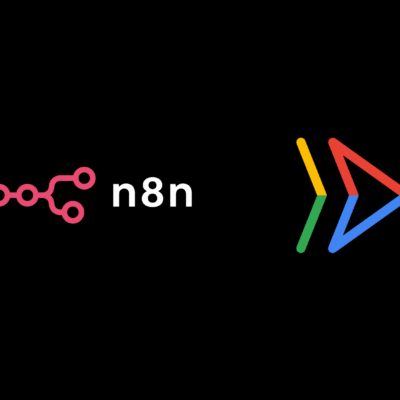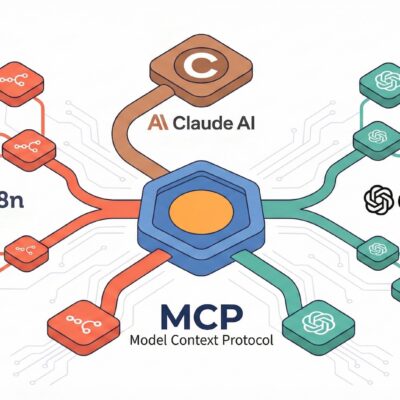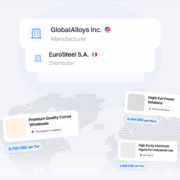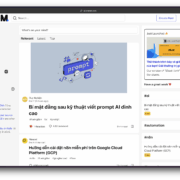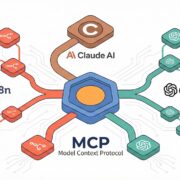Imagine automating complex web tasks—filling out forms, scraping data, navigating websites, or running automated tests—using plain English instructions instead of writing intricate code. Sound too good to be true? Welcome to Browser Use, a revolutionary open-source Python library that brings the power of AI agents to web automation.
For years, developers have relied on tools like Puppeteer and Playwright to automate browser tasks, but these tools require you to write detailed scripts for every interaction. Browser Use changes the game by combining modern LLMs (Large Language Models) with browser automation, allowing your code to understand web pages and make intelligent decisions about how to interact with them.
Whether you’re building automated testing systems, web scrapers, data extraction pipelines, or intelligent personal assistants, Browser Use simplifies the entire process. With over 71.9k GitHub stars and 2,100+ organizations already using it, this tool has proven itself in real-world production environments.
In this comprehensive guide, you’ll learn how to install Browser Use, understand its core concepts, and implement practical automation tasks with real code examples. By the end, you’ll be ready to tackle complex web automation challenges with confidence.
Ready to revolutionize your automation workflow? Let’s dive in!
What is Browser Use?
Core Concept
Browser Use is an open-source Python library that enables AI-powered browser automation. Unlike traditional automation tools that require you to programmatically specify every action (click here, wait for element, extract text), Browser Use lets you describe what you want to accomplish in natural language, and an AI agent handles the rest.
At its heart, Browser Use combines three powerful components:
- The Browser Engine – Powered by Playwright, it controls the actual web browser
- The AI Agent – An intelligent system that understands your task and plans the steps needed to complete it
- The LLM (Language Model) – The “brain” that interprets your task and makes decisions about how to interact with web pages
How It Works
When you create a Browser Use agent, here’s what happens:
Your Task (Plain English)
↓
LLM Agent
↓
Understands the goal and plans actions
↓
Browser Automation
↓
Website Interaction
↓
ResultsThe agent can see web page content, interact with elements, fill forms, navigate between pages, and extract data—all while making intelligent decisions based on the context.
Key Features
- AI-Powered Decision Making
The agent understands webpage content and can make intelligent choices about what to click, where to type, and what data to extract. - Natural Language Tasks
Describe what you want in plain English. No need to write complex selectors or step-by-step instructions. - ChatBrowserUse Optimization
Browser Use’s proprietary LLM completes tasks 3-5x faster than generic models with superior accuracy. - Multi-LLM Support
Works with OpenAI (GPT-4, O3), Anthropic (Claude), Google Gemini, or Browser Use’s own ChatBrowserUse model. - Cloud & Local Options
Run locally for development and testing, or use Browser Use Cloud for production-grade scalability and stealth browsers. - Extensible Architecture
Add custom tools, integrate with your workflows, and extend functionality as needed. - Real Browser Interaction
Uses actual browser engines (Chromium via Playwright), ensuring compatibility with modern JavaScript-heavy websites.
Real-World Use Cases
- Automated Form Filling
Fill job applications, surveys, or registration forms automatically. - E-Commerce Automation
Add products to carts, compare prices, and complete purchases. - Data Extraction
Scrape structured data from websites, handle pagination, and compile results. - End-to-End Testing
Test complex user workflows across your web applications. - Personal Assistant Tasks
Book appointments, find information, or perform research across multiple sites.
Installation Guide
Prerequisites
Before installing Browser Use, ensure you have:
- Python 3.11 or higher – Download Python
- pip or uv package manager (we’ll use
uvas it’s recommended by Browser Use) - Basic command-line knowledge
- An LLM API key – Get one from OpenAI, Anthropic, or sign up for free Browser Use Cloud credits
Step 1: Install Python and uv
First, verify Python is installed:
python --versionNext, install uv, a fast Python package manager:
# On macOS/Linux
curl -LsSf https://astral.sh/uv/install.sh | sh
# On Windows
powershell -ExecutionPolicy ByPass -c "irm https://astral.sh/uv/install.ps1 | iex"Or use pip:
pip install uvStep 2: Create a Project Directory
Organize your Browser Use project:
mkdir my-browser-agent
cd my-browser-agent
uv initThis creates a basic Python project structure with a virtual environment.
Step 3: Install Browser Use
Install the Browser Use package:
uv add browser-use
uv syncOr using pip:
pip install browser-useStep 4: Install Browser Binaries
Browser Use uses Playwright under the hood, so you need to install browser binaries:
uvx browser-use installOr with pip:
playwright installThis downloads Chromium, Firefox, and WebKit binaries (~500MB total).
Step 5: Set Up Your LLM API Key
Create a .env file in your project directory:
touch .envAdd your API key. Choose one based on your preference:
For OpenAI:
OPENAI_API_KEY=sk-your-api-key-hereFor Browser Use Cloud (free tier with $10 credits):
BROWSER_USE_API_KEY=your-browser-use-api-keyFor Anthropic (Claude):
ANTHROPIC_API_KEY=sk-ant-your-api-key-hereStep 6: Verify Installation
Create a simple test script (test_installation.py):
from browser_use import Agent, Browser, ChatBrowserUse
import asyncio
async def main():
# Initialize components
browser = Browser()
llm = ChatBrowserUse()
# Create an agent with a simple task
agent = Agent(
task="Visit example.com and tell me the main heading",
llm=llm,
browser=browser,
)
# Run the agent
history = await agent.run()
print("✓ Installation successful!")
print(f"Task completed. History: {history}")
if __name__ == "__main__":
asyncio.run(main())Run it:
python test_installation.pyIf everything works, you’ll see the agent visit the website and report back!
Hands-On Usage Examples
Now let’s explore practical examples that showcase Browser Use’s capabilities.
Example 1: Simple Web Navigation and Information Extraction
Extract information from a website:
from browser_use import Agent, Browser, ChatBrowserUse
import asyncio
async def main():
browser = Browser()
llm = ChatBrowserUse()
agent = Agent(
task="Go to GitHub.com and find the trending repositories. Tell me the top 3 trending Python projects today.",
llm=llm,
browser=browser,
)
history = await agent.run()
# Access the final result
if history:
print("✓ Task completed!")
print(f"Result: {history}")
if __name__ == "__main__":
asyncio.run(main())What this does:
- Navigates to GitHub
- Finds the trending section
- Identifies top Python projects
- Returns results in a structured format
Example 2: Automated Form Filling
Submit a form with multiple fields:
from browser_use import Agent, Browser, ChatOpenAI
import asyncio
async def main():
browser = Browser()
# Using OpenAI's O3 model for better accuracy
llm = ChatOpenAI(model="o3")
agent = Agent(
task="""
Go to example.com/form
Fill out the contact form with:
- Name: John Developer
- Email: [email protected]
- Message: I'm interested in learning Browser Use
- Subscribe to newsletter: Yes
Then submit the form
""",
llm=llm,
browser=browser,
)
history = await agent.run()
print("✓ Form submitted successfully!")
if __name__ == "__main__":
asyncio.run(main())Key features:
- Natural language form instructions
- Handles checkboxes, dropdowns, and text fields
- Automatically locates form elements
- Submits and validates completion
Example 3: Data Scraping with Structured Output
Extract and structure data from a webpage:
from browser_use import Agent, Browser, ChatBrowserUse
from pydantic import BaseModel
import asyncio
# Define the data structure you want to extract
class Product(BaseModel):
name: str
price: float
rating: float
availability: str
async def main():
browser = Browser()
llm = ChatBrowserUse()
agent = Agent(
task="""
Go to an e-commerce website and find 5 products.
For each product, extract: name, price, customer rating, and availability.
Return the data in a structured format.
""",
llm=llm,
browser=browser,
)
history = await agent.run()
print("✓ Data extracted successfully!")
# The agent understands your Pydantic model and returns structured data
# You can parse and use it programmatically
if __name__ == "__main__":
asyncio.run(main())Example 4: Multi-Step Workflow
Handle complex, multi-step processes:
from browser_use import Agent, Browser, ChatBrowserUse
import asyncio
async def main():
browser = Browser()
llm = ChatBrowserUse()
agent = Agent(
task="""
1. Search for "Python machine learning tutorials" on Google
2. Click on the top 3 results
3. For each result, extract the page title and main topic
4. Compile a summary of what you found
""",
llm=llm,
browser=browser,
)
history = await agent.run()
print("✓ Multi-step workflow completed!")
if __name__ == "__main__":
asyncio.run(main())Tips and Best Practices
1. Choose the Right LLM for Your Task
- For Speed and Cost:
UseChatBrowserUse()– Browser Use’s optimized model that’s 3-5x faster than generic models. - For Maximum Accuracy:
UseChatOpenAI(model="o3")for complex, nuanced tasks. - For Privacy:
Run local models like Ollama or use on-premise solutions.
2. Handle Authentication
For websites requiring login:
agent = Agent(
task="Log in with email: [email protected] and password: [your-password]",
llm=llm,
browser=browser,
)Or use browser profiles to reuse saved sessions:
# Sync your Chrome profile
curl -fsSL https://browser-use.com/profile.sh | BROWSER_USE_API_KEY=XXXX sh3. Handle CAPTCHAs
For production use with CAPTCHA-heavy sites, use Browser Use Cloud, which provides stealth browser fingerprinting designed to avoid detection.
4. Add Custom Tools
Extend Browser Use with custom functionality:
from browser_use.tools import Tool
@Tool()
def send_email(recipient: str, subject: str, body: str) -> str:
"""Send an email notification"""
# Your email logic here
return f"Email sent to {recipient}"
agent = Agent(
task="...",
llm=llm,
browser=browser,
use_custom_tools=[send_email],
)5. Optimize for Performance
- Keep tasks specific and focused
- Break complex workflows into multiple smaller agents
- Use request caching to avoid repeated API calls
- Set appropriate timeouts for long-running tasks
6. Error Handling and Retries
async def main():
max_retries = 3
for attempt in range(max_retries):
try:
agent = Agent(task="...", llm=llm, browser=browser)
result = await agent.run()
return result
except Exception as e:
print(f"Attempt {attempt + 1} failed: {e}")
if attempt == max_retries - 1:
raise
await asyncio.sleep(2 ** attempt) # Exponential backoffComparison with Similar Tools
| Feature | Browser Use | Puppeteer | Playwright |
|---|---|---|---|
| Language | Python | JavaScript | Multiple (JS, Python, Java, C#) |
| AI Integration | Native LLM support | Requires custom logic | Requires custom logic |
| Learning Curve | Easy (natural language) | Steep (code-based) | Moderate |
| Browser Support | Chromium, Firefox, WebKit | Chromium-focused | Chromium, Firefox, WebKit |
| Form Filling | Intelligent & automatic | Manual selectors | Manual selectors |
| Data Extraction | AI-powered understanding | Manual parsing | Manual parsing |
| Task Planning | Automatic step generation | Manual workflow design | Manual workflow design |
| Open Source | MIT License | Apache 2.0 | Apache 2.0 |
| Community | Growing rapidly | Large & established | Large & established |
When to use Browser Use: AI-powered automation, quick prototyping, complex workflows
When to use Puppeteer/Playwright: Low-level control, performance-critical tasks, established testing frameworks
Conclusion
Browser Use represents a paradigm shift in web automation. By harnessing the power of AI agents, it democratizes browser automation—making complex workflows accessible to developers of all skill levels.
Key Takeaways
- Write less code – Describe tasks in plain English instead of writing intricate automation scripts
- Deploy faster – Get from idea to working automation in minutes, not days
- Scale intelligently – The AI agent handles edge cases and makes smart decisions
- Open and free – Open-source with optional cloud hosting for production workloads
Getting Started
- Install Browser Use using the simple pip command
- Choose your LLM – Start with ChatBrowserUse for speed
- Write your first agent – Start with simple tasks like navigation and form filling
- Expand gradually – Build more complex workflows as you gain confidence
Next Steps
- Star the Repository – Show your support on GitHub
- Read the Documentation – Deep dive into advanced features at docs.browser-use.com
- Try Browser Use Cloud – Get started with managed hosting and stealth browsers
- Join the Community – Contribute ideas, share projects, and collaborate with other developers
- Build and Share – Create tools and extensions that others can benefit from
Browser automation has never been easier. The future of web interaction is AI-powered, and Browser Use is leading the charge. Whether you’re automating personal tasks, building enterprise systems, or experimenting with AI capabilities, Browser Use gives you the tools to succeed.
Ready to get started? Head over to the official GitHub repository and begin your browser automation journey today!

